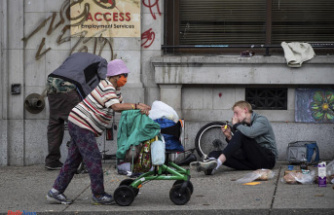At the conclusion of the 20th century, the Greenwood District of Tulsa, Oklahoma, became one of the first communities in the nation flourishing with Black entrepreneurial companies. The prosperous city, founded by several descendants of slaves, earned a reputation as the Black Wall Street of America and turned into a harbor for African Americans in an extremely segregated city under Jim Crow laws.
On May 31, 1921, a white mob turned Greenwood upside down into a few of the worst racial massacres in U.S. history. In the matter of hours, 35 square blocks of the vibrant Black community were turned into smoldering ashes. Countless Black folks were murdered -- estimates ranged from 55 to over 300 -- and 1,000 houses and businesses were looted and set on fire.
Yet for the longest period, the massacre received scant mentions in newspapers, textbooks and civil and political discussions. It was only in 2000 that the slaughter was included from the Oklahoma public colleges' curriculum, and it didn't go into American history textbooks until recent decades. The 1921 Tulsa Race Riot Commission has been made to research in 1997 and officially published a report at 2001.
"The massacre was actively covered up in the white community in Tulsa for almost a half century," said Scott Ellsworth, a professor of Afro American and African studies at the University of Michigan and author of"The Universe Breaking" concerning the Tulsa massacre.
"When I started my study in the 1970s, I discovered that official National Guard reports and other files were all missing," Ellsworth said. "Tulsa's two everyday white papers, they moved out of their way for decades not to mention the massacre.
N the week following the massacre, Tulsa's chief of police ordered his officers to visit all of the photography studios in Tulsa and confiscate all of the pictures taken of the carnage, Ellsworth said.
These photos, which were later found and became the materials the Oklahoma Commission utilized to examine the massacre, finally landed in the lap of Michelle Place in Tulsa Historical Society & Museum in 2001.
"It took me about four times to make it through the box since the photographs were horrific. I hadn't ever seen those kinds of pictures before," Place said. "I did not understand anything concerning the riot until I came to work . Since I've been here, I have been at my desk to guard them to the best of my ability."
The Tulsa museum was set up in the late 1990s, but people couldn't find a hint of their race massacre until 2012 when Position became executive director, determined to inform all of Tulsa's stories. An electronic collection of the photos was eventually made available for viewing online.
"There is still a significant number of people in our community who do not wish to check at it, who don't want to discuss it," Place said.
'The silence is layered'
Not only did Tulsa city officials cover the bloodbath, but in addition they deliberately shifted the story of their massacre by calling it a"riot" and attributing the Black community for exactly what went down, based on Alicia Odewale, an archaeologist in University of Tulsa.
The massacre wasn't discussed openly in the African American community for quite a while. First from fear -- if it happened once, it could occur again.
"You are seeing the perpetrators walking openly on the streets," Odewale explained. "You're in the Jim Crow South, and you will find racial terrors occurring across the country currently. They're shielding themselves for a reason."
Moreover, this became such a traumatic event for survivors, as well as much like Holocaust survivors and World War II veterans, most of them didn't wish to burden their children and grandchildren with these horrible memories.
Ellsworth said he knows of descendants of massacre survivors who didn't find out about it until they were in their 40s and 50s.
"The silence is layered as the trauma is layered," Odewale explained. "The historical trauma is real and that trauma lingers especially since there's no oversight, no liability and no reparation or financial payment."
What triggered the massacre?
On May 31, 1921, Dick Rowland, a 19-year old Black shoeshiner, tripped and fell in an elevator and his hand accidentally captured the shoulder of Sarah Page, a white 17-year-old operator. Page cried and Rowland was seen running away.
However, by that day, there was talks of lynching Rowland on the streets of white Tulsa. The tension then escalated following the snowy paper Tulsa Tribune ran a front-page narrative entitled"Nab Negro for Attacking Girl In Elevator," which accused Rowland of stalking, rape and assault.
When the Works Progress Administration went into microfilm the previous issues of the Tribune in the 1930s, the op-ed had been torn from this newspaper, Ellsworth said.
Many consider the newspaper coverage undoubtedly played a role in sparking the massacre.
The wake
For Dark Tulsans, the massacre caused a decline in home ownership, occupational status and educational attainment, based on a recent study throughout the 1940s headed by Harvard University's Alex Albright.
Now, there are only a few Black businesses on the single remaining block in the Greenwood district once hailed as the Black Wall Street.
Last month, three survivors of the 1921 massacre -- ages 100, 106 and 107 -- appeared before a congressional committee, and a Georgia congressman introduced a bill that could make it easier for them to seek reparations.
Meanwhile, historians and archaeologists continued to unearth what had been lost for decades. In October, a mass grave in an Oklahoma Peninsula has been found that would be the remains of at least a dozen identified and unidentified African American massacre victims.
"We are able to look for signs of survival and signs of lifestyles. And really look for those remnants of built Greenwood and not just about how they perished," Odewale explained. "Greenwood never left."












